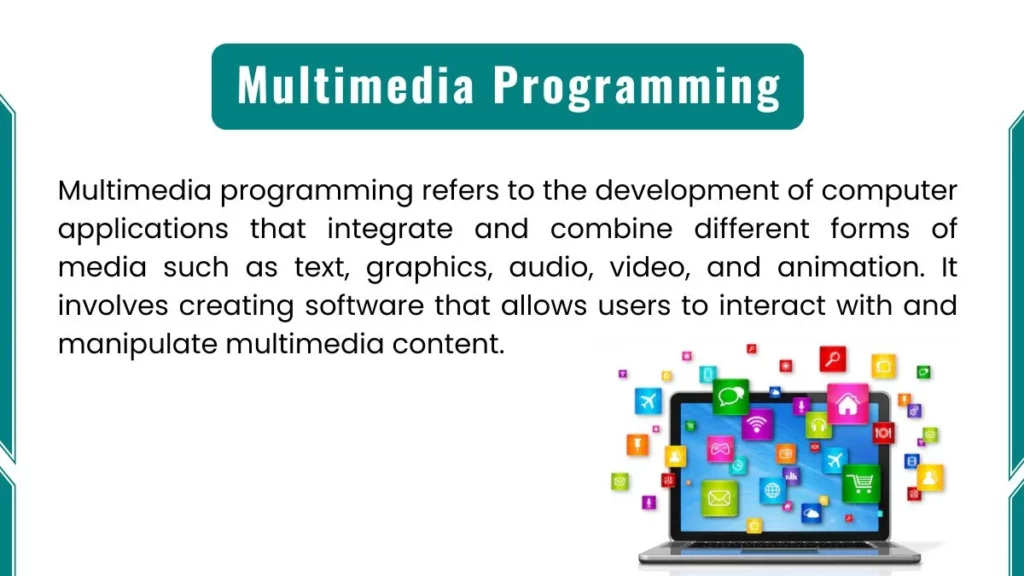Multimedia programming is a vast and exciting field that encompasses the development of applications and systems that integrate various forms of media, including audio, video, graphics, and animations.
Whether you’re a developer interested in creating immersive games, building interactive multimedia websites, or exploring virtual and augmented reality, understanding multimedia programming is essential.

Multimedia APIs and Libraries
At the core of multimedia programming lie powerful APIs (Application Programming Interfaces) and libraries that provide low-level access to multimedia hardware and functionality. These tools, such as DirectX, OpenGL, and FFmpeg enable developers to manipulate and render audio, video, and graphics data with precision and efficiency.
1. Scripting for Multimedia
Working directly with these low-level APIs can be complex and time-consuming. This is where scripting languages like JavaScript and ActionScript come into play, offering a more accessible and user-friendly way to develop multimedia applications.
These languages allow developers to leverage multimedia capabilities within web browsers or create interactive multimedia content for different platforms.
2. Multimedia Frameworks and Engines
For more advanced multimedia development such as game creation, developers often turn to specialized multimedia frameworks and engines.
These powerful tools including Unity and Unreal Engine, provide a comprehensive set of tools, libraries, and APIs designed specifically for multimedia programming. They abstract away much of the low-level complexity, allowing developers to focus on creating engaging multimedia experiences.
Core Concepts in Multimedia Programming
Multimedia programming encompasses a wide range of techniques and concepts, including:
1. Audio and Video Processing
Multimedia programming often involves working with audio and video data, which requires a range of processing techniques. From encoding and decoding media files to applying filters and mixing audio streams, developers must master these skills to create high-quality multimedia applications.
2. Graphics Rendering
Another crucial aspect of multimedia programming is graphics rendering. Whether it’s rendering 2D graphics for user interfaces, creating stunning 3D environments for games, or implementing advanced shading and texturing techniques, developers must have a solid understanding of graphics rendering concepts and technologies.
Applications of Multimedia Programming
Multimedia programming applications include:
1. Game Development
One of the most prominent applications of multimedia programming is game development. From action-packed first-person shooters to immersive role-playing adventures, multimedia programming plays a vital role in creating engaging and visually stunning gaming experiences across various platforms, including consoles, PCs, and mobile devices.
2. Web Multimedia
The rise of modern web technologies like HTML5, JavaScript, WebGL, and WebRTC has opened up new possibilities for multimedia programming on the web. Developers can now create interactive multimedia experiences directly within web browsers, enabling a seamless integration of audio, video, and graphics without the need for third-party plugins.
3. Virtual and Augmented Reality
As virtual and augmented reality (VR/AR) technologies continue to evolve, multimedia programming has become increasingly important in this domain. From creating immersive virtual environments to overlaying digital information in the real world, multimedia programming is at the heart of these cutting-edge applications. It enables developers to push the boundaries of interactive multimedia experiences.


